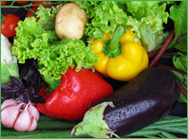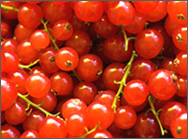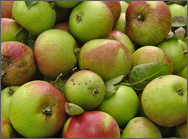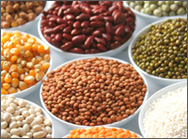Fruits
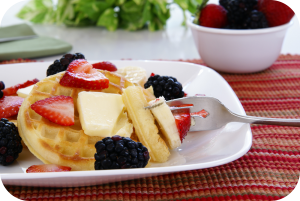 Eating fruits is a valid component to good health and organically grown fruit is best. Nutritionally, fruits offer valuable vitamins, minerals, enzymes and fibre; they are a healthy ‘fast-food’ and because they are most often eaten fresh and raw their nutrient content is maintained (cooking and storage can deplete the nutrient content of food).
Eating fruits is a valid component to good health and organically grown fruit is best. Nutritionally, fruits offer valuable vitamins, minerals, enzymes and fibre; they are a healthy ‘fast-food’ and because they are most often eaten fresh and raw their nutrient content is maintained (cooking and storage can deplete the nutrient content of food).
Most people can eat most fruits, unfortunately this does not apply to people who have Rosacea as some fruits are high on the list of triggers. Some Rosacea sufferers do not find fruit to be a trigger, some have a handful of fruits that cause a flushing episode, while others flush at almost every fruit, and so avoid fruits altogether. Avoiding one’s triggers is paramount for any Rosacea sufferer, and identifying your personal triggers/tripwires is the first step in getting this condition under control. This includes identifying fruits that trigger flushing.
Fruits that may be Rosacea triggers
Citrus fruits (and juices) are often found to be triggers, as are bananas, red plums, raisins and figs. Tomatoes are also a trigger for some people; they are sometimes called a fruit and sometimes called a vegetable.
The National Rosacea Society carried out a survey of 3,151 sufferers affected by foods and beverages. It found tomatoes affected 31% of the sufferers, but in the great debate over whether a tomato is a fruit or a vegetable there is a story about taxation on vegetables but not on fruits! Botanically it is classed as a berry-fruit, however this does mean that other vegetables should also be called fruits (cucumber, peppers, green beans, eggplant and corn).
Citrus fruits were top of the list and affected 27% of those in the survey.
Fruits can also cause allergic reactions and people who are allergic to one fruit are often allergic to similar fruits (i.e. in the same family).
Melon, peach, kiwi, apple, and banana were responsible for 72 % of the allergic reactions in a group of adults who had ‘Rosacea Fruit Allergy’.
Statistics are sometimes misleading, so it is important to note that it is 72% of adults with ‘Rosacea Fruit Allergy’, not 72% of adults with Rosacea.
Individuals who have Rosacea must realize that some fruits can affect one person, but not another. One person may find that prunes and orange juice are triggers but will be able to eat lots of other fruits without a problem.
Fruits less likely to be triggers
Some fruits are less likely to be triggers, for example cooked and dried fruits (these are not recommended for those people who can eat fresh fruits without triggering flushing because they are inferior nutritionally; cooking depletes nutrients and dried fruits have a high sugar content). Dried prunes, cranberries, and blueberries are good choices for those who cannot tolerate fresh fruits.
However, if you are lucky enough to be able to eat a variety of fresh fruits, choose those which offer beneficial nutrients for Rosacea: apples, apricots, avocados, banana, blackberries, and blueberries, cherries, papaya, peaches, pears, persimmon (well ripened), pomegranate and plums.

